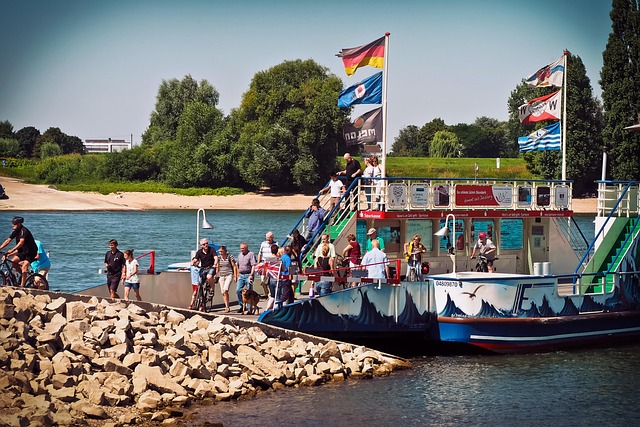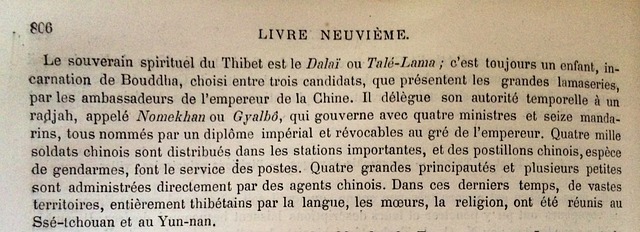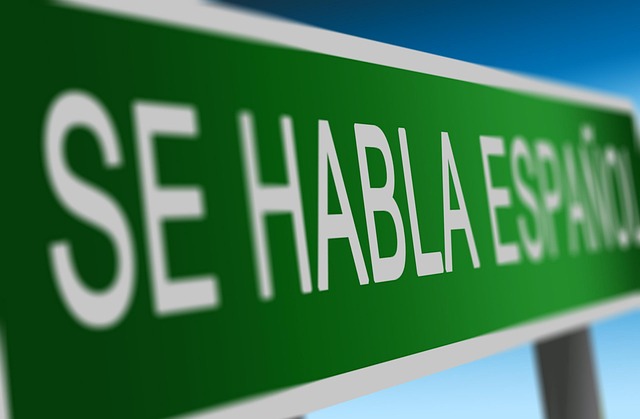Unlock Languages: Top Translation Apps for Seamless Communication

Seamless translation, crucial for global markets, varies from basic conversational apps like Google…….
Your Digital Pulse for Translation in Khi PK
Keep in touch with the cutting-edge Translation news and trends on translation.karachi-pakistan.com. Discover exclusive content.
In our increasingly interconnected world, translation plays a pivotal role in bridging cultural gaps, fostering international dialogue, and enabling global collaboration. This art and science of conveying meaning from one language to another is not merely about word-for-word substitutions; it involves a complex interplay of linguistics, culture, and context. This article aims to provide an immersive exploration of translation, delving into its historical roots, current global impact, technological innovations, and the challenges it faces in the modern era. By the end, readers will grasp the multifaceted nature of translation and its indispensable role in our diverse and interconnected societies.
Definition: Translation is the process of transferring written or spoken content from one language (source language) to another (target language), while ensuring the preservation and, ideally, the adaptation of the original meaning and style. It involves a deep understanding of both languages and their cultural contexts.
Core Components:
Linguistic Competence: Translators must possess exceptional proficiency in both the source and target languages, encompassing grammar, syntax, and vocabulary.
Cultural Sensitivity: Understanding cultural nuances is crucial. A translator must navigate idiomatic expressions, proverbs, and cultural references to ensure the translated text resonates with the target audience.
Semantic Precision: Accurately conveying the meaning of the source text is essential. Translators must be adept at discriminating between subtle shades of meaning and finding equivalent expressions in the target language.
Stylistic Adaptation: While preserving the core message, translators adapt the style to suit the conventions of the target language, ensuring naturalness and fluency.
Historical Context: The practice of translation has ancient origins, dating back to the early civilizations of Egypt, Mesopotamia, and Greece. The translation of religious texts, philosophical works, and historical chronicles has been a driving force throughout history. The development of written languages and scripts facilitated the exchange of knowledge across cultures, laying the groundwork for modern translation practices.
Translation is a powerful tool for fostering global understanding and diplomacy. It enables cross-cultural communication, facilitates international business, and promotes access to information and education. Here’s how it impacts different aspects of our world:
| Impact Area | Description |
|---|---|
| Literature and Arts | Translation has enriched global literature by making works from diverse cultures accessible to a wider audience. It allows readers to appreciate foreign languages and explore new perspectives, fostering cultural appreciation. |
| Business and Commerce | In the global market, accurate translation is vital for multinational corporations. It enables businesses to reach new markets, ensuring effective communication with customers, partners, and employees worldwide. |
| Healthcare and Science | Medical and scientific translations are critical in international healthcare collaboration. They facilitate the sharing of research findings, medical knowledge, and best practices across borders. |
| Legal and Political Systems | Legal translation is essential for international treaties, agreements, and court proceedings. It ensures fairness and understanding in cross-border legal matters, upholding justice globally. |
Trends Shaping Translation:
Machine Translation (MT) Advancements: The rise of AI-powered machine translation tools has revolutionized the industry. While not perfect, these tools provide quick translations, making initial drafts accessible to a broader range of translators.
Localization: This involves adapting content for specific regional markets, considering cultural, linguistic, and social factors. Localization ensures that products, websites, and services resonate with local audiences.
Specialized Translation: With growing knowledge specialization, demand for expert translators in fields like science, law, and technology is increasing. Specialized translation ensures precise communication within complex domains.
The translation industry is a significant contributor to the global economy, with numerous market dynamics at play.
Market Size: According to a 2022 report by Research and Markets, the global translation services market size was valued at USD 41.7 billion in 2021 and is projected to grow at a CAGR of 6.5% from 2022 to 2030. This growth is driven by factors like globalization, digital transformation, and increasing cross-border business activities.
Investment Patterns: Multinational corporations invest heavily in translation services to support their global operations. Localizing content for different markets helps businesses expand their reach and maintain brand consistency.
Economic Impact: Translation plays a vital role in economic development, especially in regions with strong language industries. It creates jobs, fosters cultural tourism, and contributes to the export of linguistic expertise.
Technology has been a game-changer in the translation field, introducing tools that enhance efficiency, accuracy, and accessibility. Here’s an overview of some significant advancements:
Machine Translation (MT): As mentioned earlier, MT systems use neural networks and artificial intelligence to provide rapid translations. Tools like Google Translate have become household names, offering free language translation services. While not perfect, they are constantly improving and can handle complex sentences and domain-specific terminology.
Computer-Assisted Translation (CAT) Tools: These software applications assist translators by providing memory functions, term bases, and translation environments. CAT tools improve productivity, ensure consistency, and facilitate collaboration among translators.
Translation Memory (TM): TMs are databases that store previously translated segments of text. They help maintain consistency in terminology and style, reduce memory workload for translators, and improve overall efficiency.
Post-Edit and Quality Assurance: Automated post-editing tools assist human reviewers by identifying potential errors or inconsistencies in machine-translated texts. These tools enhance the overall quality of translations produced by MT systems.
The translation industry is subject to various policies and regulations that ensure quality, protect intellectual property, and promote ethical practices. Key considerations include:
Language Standards: Many countries have established language standards and testing bodies to assess and certify translator competency. These standards guarantee a certain level of proficiency and skill within the profession.
Intellectual Property Rights: Translation services are bound by copyright laws and intellectual property regulations. Translators must respect the original work’s ownership rights and ensure proper attribution when adapting content.
Ethical Guidelines: Professional translation associations develop ethical guidelines for translators, outlining responsibilities, confidentiality, and conflict of interest practices. These guidelines promote integrity within the industry.
Despite its significance, translation faces several challenges that can impact its quality and accessibility. Addressing these issues is crucial for the industry’s growth:
Consistency and Terminology Management: Maintaining consistency in terminology across projects and languages is a significant challenge. Translators must rely on terminological databases and collaborative platforms to ensure coherence.
Cultural Adaptation: Adapting content for different cultures while preserving its essence is not always straightforward. Misinterpretations or cultural misunderstandings can occur, leading to mistranslations.
Quality Assurance: Ensuring high-quality translations, especially with tight deadlines, remains a challenge. Automated tools assist but cannot replace human review and expertise.
Strategies for Improvement:
Standardization and Education: Developing standardized training programs and certifications can enhance translator competency and consistency.
Collaborative Platforms: Utilizing collaborative translation platforms enables translators to work together, share knowledge, and ensure quality through peer reviews.
Continuous Learning: Translators must stay updated with industry trends, new technologies, and cultural changes to deliver accurate and relevant translations.
Wikipedia’s mission to provide free knowledge globally relies heavily on translation. Its volunteer translators collaborate to make articles accessible in numerous languages, ensuring that diverse audiences can contribute and access information. This collaborative effort has made Wikipedia one of the most extensive multilingual repositories of knowledge, showcasing the power of community-driven translation.
The COVID-19 pandemic highlighted the critical role of translation in healthcare communication. With languages posing a barrier to effective public health messaging, translators played a vital role in adapting and localizing information for different communities. This included translating medical guidelines, research papers, and public service announcements, ensuring that essential knowledge reached people regardless of their linguistic background.
The translation of indigenous languages and cultural texts is essential for preserving minority cultures. For example, efforts to translate and publish traditional stories, folklore, and historical records in endangered languages ensure that these cultural treasures are not lost. These translations not only protect cultural heritage but also contribute to the revitalization of at-risk languages.
The translation industry is poised for further growth and innovation, with several emerging trends shaping its future:
Artificial Intelligence (AI) Integration: AI will continue to play a pivotal role in translation, enhancing speed, accuracy, and accessibility. Advanced machine learning models will improve the quality of automated translations, making them increasingly useful for complex texts.
Deep Learning and Neural Machine Translation: Deep learning techniques will refine MT systems, enabling them to handle even more sophisticated linguistic nuances. These advancements will make machine translation a viable option for specialized domains.
Personalized and Contextual Translation: Future translation technologies will cater to individual user needs, providing personalized and context-aware translations. This could include real-time language learning assistance and tailored content adaptation.
Translation as a Service (TaaS): The trend of offering translation services as a subscription or on-demand model is expected to grow. This approach provides businesses and individuals with flexible access to translation resources.
Translation is more than just words on a page; it is the bridge that connects minds, fosters understanding, and enables global cooperation. From ancient texts to modern digital content, translators play a crucial role in preserving and sharing knowledge across cultures. As we navigate an increasingly interconnected world, the demand for high-quality translation services will only grow, shaping how we communicate, learn, and do business globally.
By embracing technological advancements, addressing challenges, and prioritizing cultural sensitivity, the translation industry can continue to unlock new frontiers in global communication. The future of translation promises exciting possibilities, ensuring that language barriers no longer impede our collective progress.
Q: How do I become a professional translator?
A: To become a professional translator, you typically need a strong command of at least two languages. Obtain a degree in translation or a related field, gain practical experience through internships or volunteer work, and consider certification from recognized organizations to enhance your credentials.
Q: What tools do translators use?
A: Translators utilize a variety of tools, including CAT software (like MemoQ, XTM), translation memories, glossaries, and industry-specific terminological databases. They also rely on online resources, dictionaries, and thesauruses for reference.
Q: Can machine translation replace human translators?
A: While machine translation has made significant strides, it is unlikely to fully replace human translators. Human expertise is still crucial for complex texts, ensuring accuracy, cultural adaptability, and creative fluency that MT systems may struggle with.
Q: How does translation contribute to cultural preservation?
A: Translation plays a vital role in preserving minority languages and cultures by making their literary works, historical documents, and cultural artifacts accessible to broader audiences. It helps protect linguistic diversity and promotes cross-cultural understanding.
Q: What are some common challenges faced by translators?
A: Translators often encounter challenges like maintaining consistency, especially with technical terms; adapting cultural references accurately; managing tight deadlines; and ensuring high-quality output despite the pressure of automated translation tools.

Seamless translation, crucial for global markets, varies from basic conversational apps like Google…….

Translation: A Blend of Expertise and Cultural Understanding- Language Proficiency: Mastering gramma…….

Technology, led by artificial intelligence (AI) and machine translation (MT), is revolutionizing the…….

Translation Memory (TM) is a powerful tool for translators, enhancing efficiency and consistency by…….

Translation requires a deep understanding of cultural nuances, historical contexts, and local custom…….

Translation naturally demands a strategic equilibrium between speed and accuracy. While automated to…….

Limited translation resources pose challenges for lesser-studied languages, affecting internationali…….

Global market success demands sophisticated localization beyond simple translation. Expert translato…….

Immerse in authentic content, prioritize fluency in translation, diversify sources, engage in struct…….

The digital age has transformed translation with machine translation (MT) platforms, offering effici…….